The Best Cleansers for Combination Skin Offer Hydration—and Oil Control
Bring on the balance.


Gabrielle Ulubay
If you have combination skin, you know the routine: Control oil without stripping the skin, which is honestly easier said than done. Or is it? According to board-certified dermatologist Divya Shokeen, MD, this skin type is characterized by oily and dry areas existing side-by-side. The cheeks and the outer area of the face can tend to be dry, while T-zones are often oily, and the skin on the rest of the face can range from feeling dry and tight to shiny and breakout-prone. So, when it comes to cleansing, I'm often on the struggle bus to find face washes for combination skin that actually do the trick.
What I've learned: the key is to opt for gentle, balancing ingredients that can cleanse oily areas without drying out the rest of your face. It's easier said than done, so board-certified dermatologist Mamina Turegano, MD, also recommends supplementing a combination skin routine with additional products to achieve balance. For the dry areas of your face, "look for hydrating ingredients like ceramides, hyaluronic acid, and glycerin," Dr. Turegano says. And for the oilier zones, "light exfoliating ingredients such as enzymes or very fine powders can help sweep away excess oil and dead skin without harsh scrubbing," she adds.
Ahead, the 12 best cleansers for combination skin that dermatologists love to soothe, brighten, and hydrate combination skin—all in perfect balance.
The Best Cleansers for Combination Skin
- Best Cleanser for Combination Skin Overall: La Roche-Posay Toleriane Purifying Foaming Cleanser
- Best Cleanser for Sensitive Combination Skin: Aveeno Calm + Restore Foaming Cleanser for Sensitive Skin
- Best Cream-to-Foam Cleanser for Combination Skin: Chanel La Mousse Camellia Cleansing Cream-to-Foam
- Best Gel Cleanser for Combination Skin: Youth to the People Superfood Cleanser
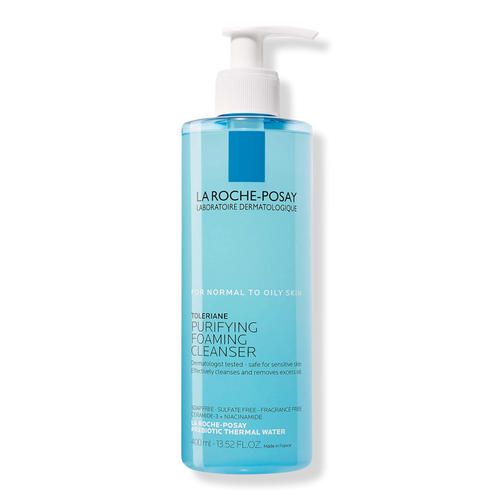
La Roche-Posay's cleanser is Dr. Shokeen's favorite for combination skin, thanks to its soothing formula, which includes gentle surfactants and thermal spring water. The French pharmacy brand effectively cleanses and removes dirt and oil, without leaving the skin feeling overly tight or squeaky clean.
Key Ingredients: La-Roche Posay Prebiotic Thermal Water, glycerin, ceramides, niacinamide
What I Love: Expert-approved; Great for breakout-prone skin; Lightweight
What I Don't: Some find it a little drying
Review for MC: "The foaming texture effectively removes impurities and excess oil without disrupting the skin's natural balance. It is also fragrance-free and non-comedogenic, making it suitable for those with combination skin prone to sensitivity and breakouts." — Dr. Shokeen, Board-Certified Dermatologist
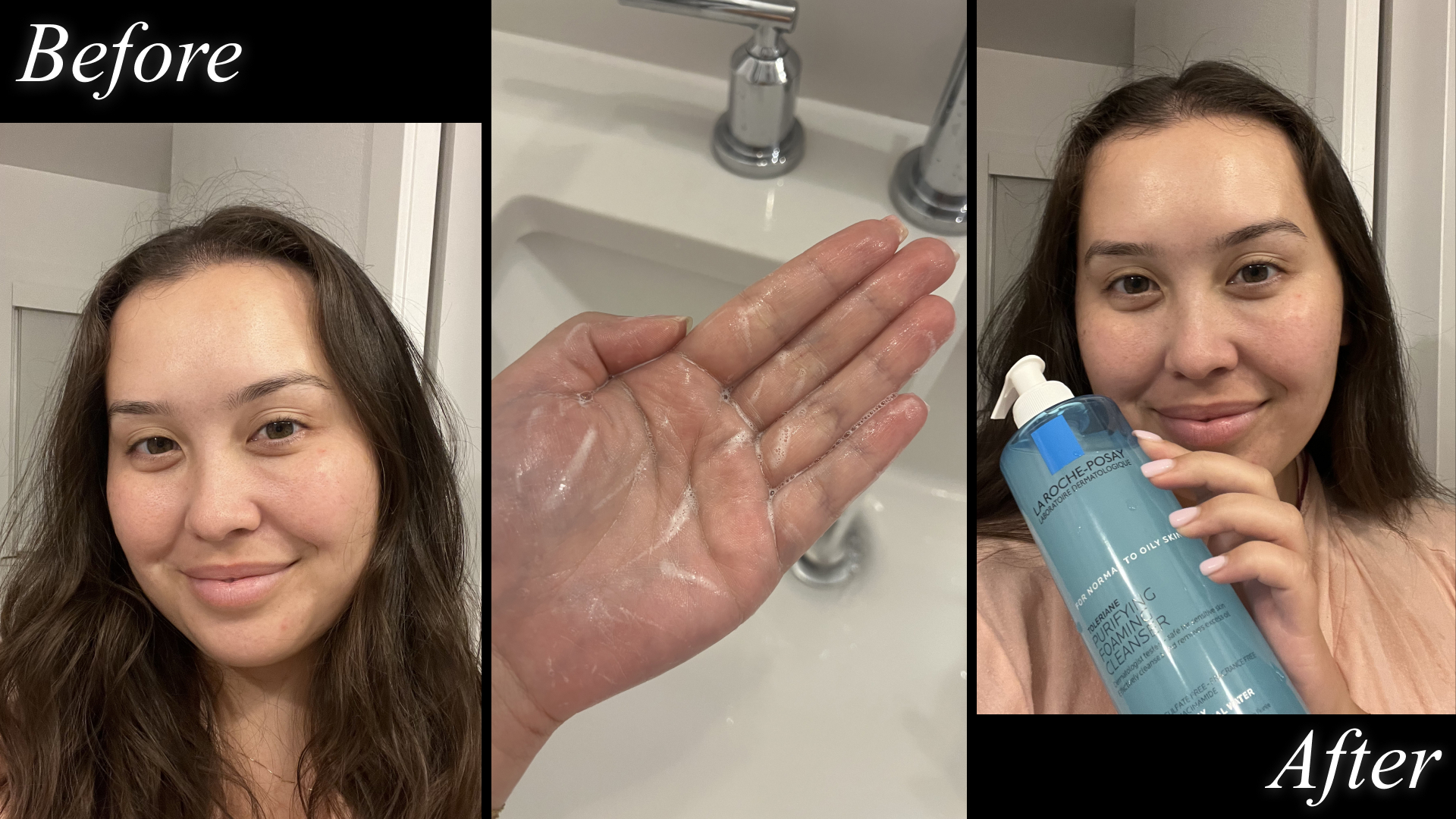
Catharine Malzahn before and after testing La Roche-Posay's Toleriane Purifying Foaming Face Wash.
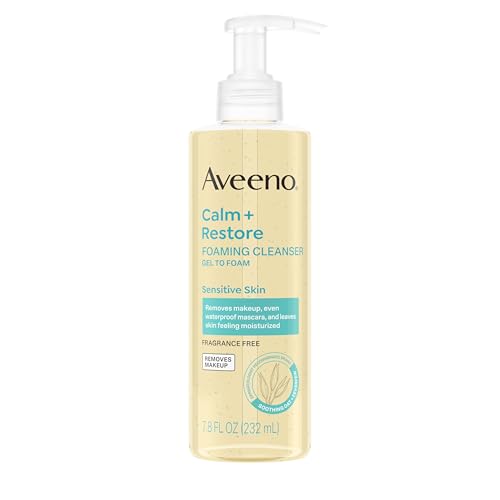
Anyone with sensitive skin knows they can trust Aveeno. The brand's newest face wash, a gel-to-foam cleanser, is gentle enough to be used on even sensitive skin types, yet it packs a punch and also removes makeup (even mascara!). It'll erase the oil where I don't want it, yet leaves my skin feeling happy and hydrated.
Key Ingredients: Prebiotic oat, glycerin, hyaluronic acid
What I Love: Well-priced; Safe for sensitive skin; Lathers nicely
What I Don't: Reviewers say skin can feel a little dry after use, so make sure to follow up with moisturizer
Review for MC: "I'll be honest, I was not expecting this cleanser to really remove my makeup. It's so gentle that I wasn't sure it had the power. Not only did it remove my makeup, but it also got through sunscreen and the oil and grime from throughout the day. Though my skin isn't super sensitive, it does react to certain fragrances, and I have some skin allergies, so having a budget-friendly, sensitive skin-friendly wash I can trust is huge." — Catharine Malzahn, Contributing Beauty Writer
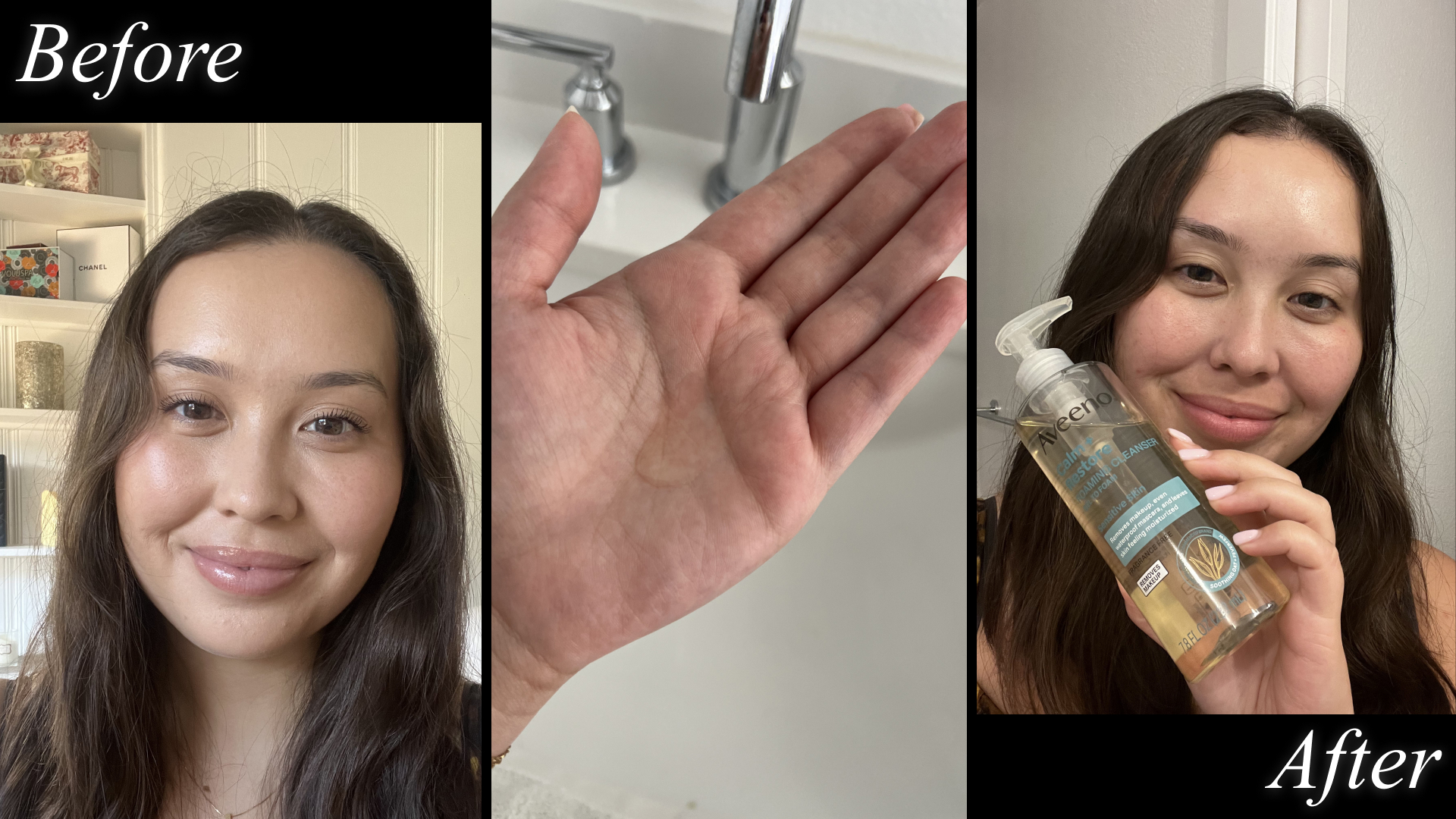
Catharine Malzahn before and after testing Aveeno Calm + Restore Foaming Face Wash
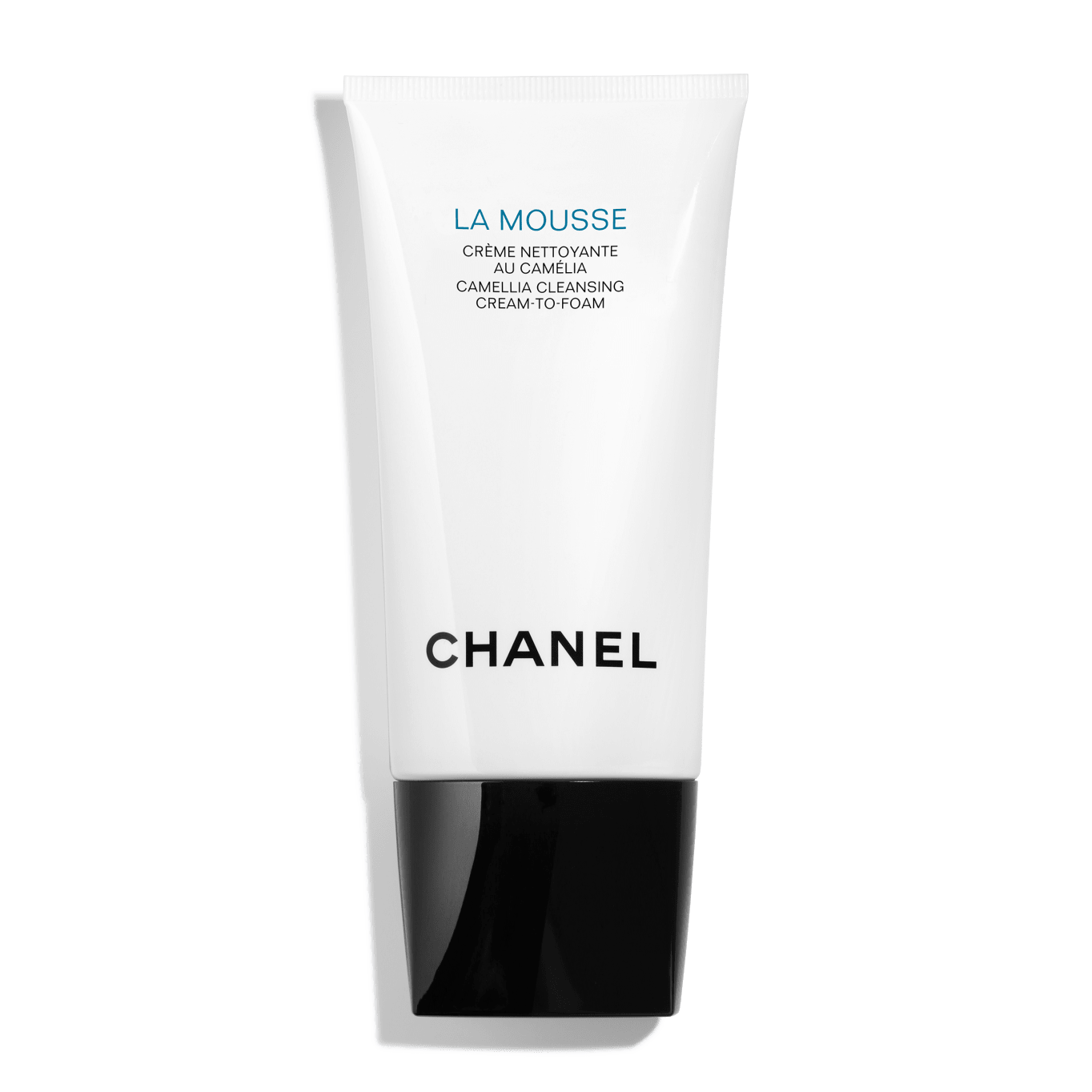
Chanel's cream-to-foam cleanser suds up quickly and leaves my skin feeling deeply cleansed. Thanks to ceramides, glycerin, and emollients, it gently cushions the skin, yet its strong cleansing ability leaves no residue behind. The floral scent is on the stronger side, but very refreshing.
Key Ingredients: Camellia Japonica flower water, camellia oleifera seed oil, ceramides
What I Love: Luxurious lather; Deeply cleanses skin; A little goes a long way
What I Don't: Expensive; Contains fragrance
Review for MC: "It takes a lot for me to love a face wash. So, I don't say this lightly, but I am truly obsessed. My skin tends to dry up in the winter, but it can still get a little shiny in my T-zone. This cleanser takes care of all of that. It swiftly removes makeup and the day's dirt without stripping my skin, and a little goes a long way, especially since the cream formula turns super foamy upon lather. Yes, it's pricey, but for a product I use twice a day, I love turning a necessary routine into a luxurious ritual. And because I need so little for an effective cleanse, one bottle has lasted me a long time. Even my dad was raving about it after I let him borrow it, and he does not get excited about skincare." — Catharine Malzahn, Contributing Beauty Writer
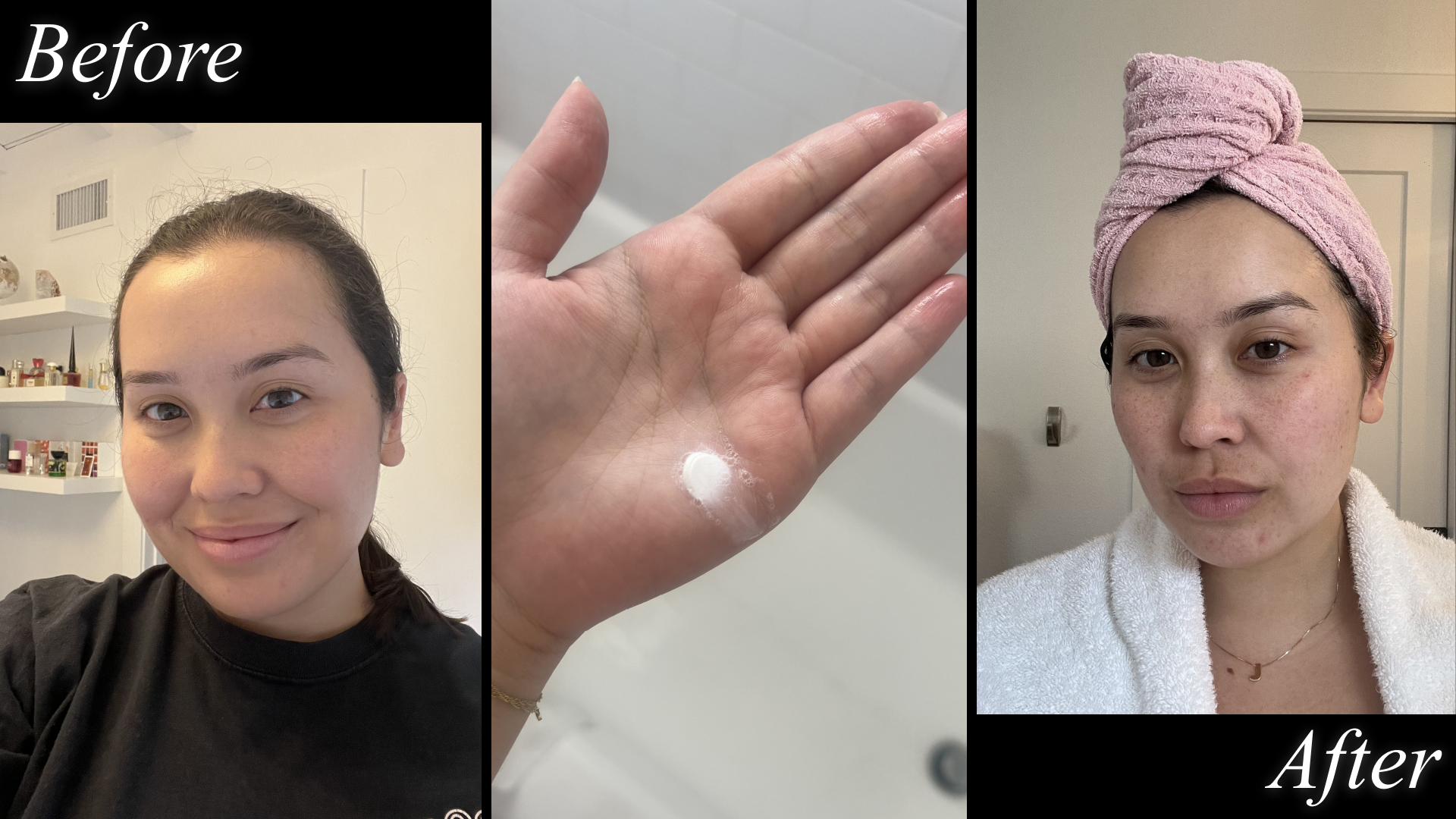
Catharine Malzahn before and after testing Chanel La Mousse Camellia Cream-to-Foam Cleanser.
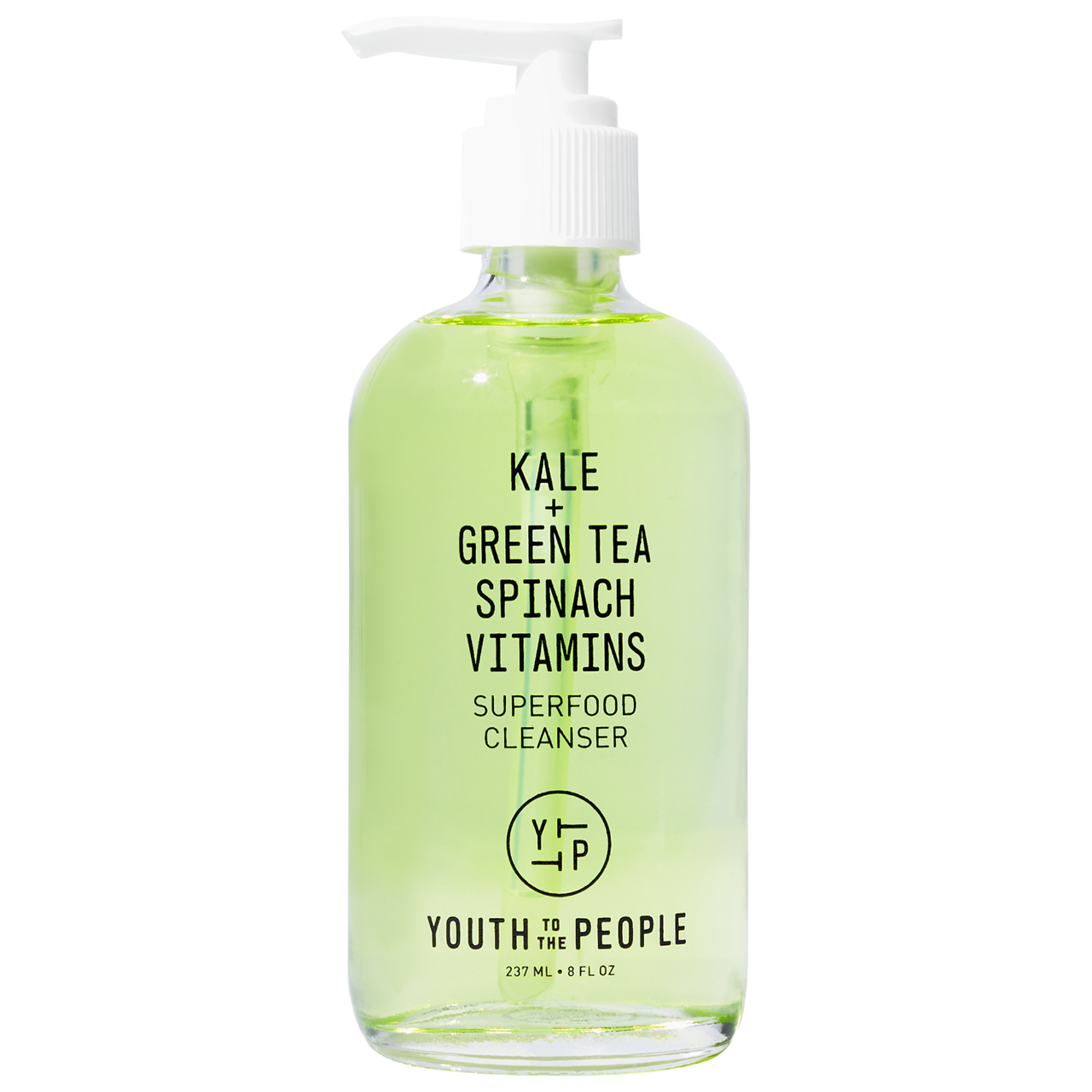
Gel cleansers sometimes have a reputation for being super drying on the skin, but Youth to the People's face wash proves that wrong. In fact, expect the opposite: It hydrates skin while still powerfully removing excess oil. With a slew of superfoods packed inside, including kale, spinach, and green tea, it's a fun way to get your antioxidants and leave your skin glowing and healthy.
Key Ingredients: Kale, spinach, glycerin, vitamins B5 and E, green tea
What I Love: Removes excess oil without feeling drying; Antioxidants promote skin health and glow; Pump bottle makes it easy to use
What I Don't: Fragrance or other ingredients may cause breakouts for some
Review for MC: "I got my entire family and multiple friends hooked on this face wash. It cleanses so gently yet powerfully (read: removes oil and mattifies), yet my skin feels super soft and cushioned after use. I love that it comes in a glass bottle, making it a more sustainable purchase, but be careful not to drop it. It's such a staple in my skincare routine that I have a mini travel-size bottle that I bring with me when I'm away." — Catharine Malzahn, Contributing Beauty Writer
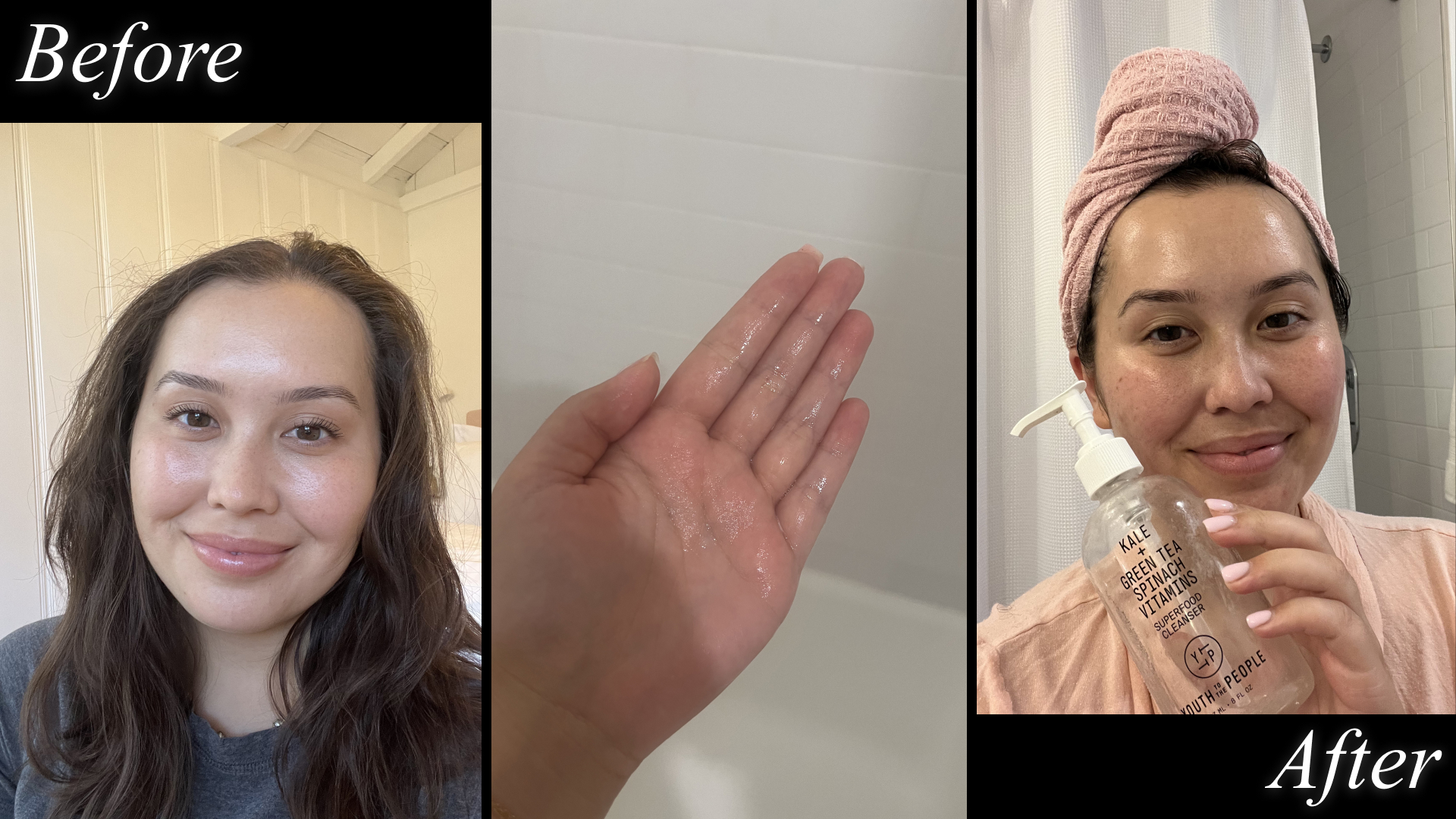
Catharine Malzahn before and after testing Youth to the People Superfood Cleanser
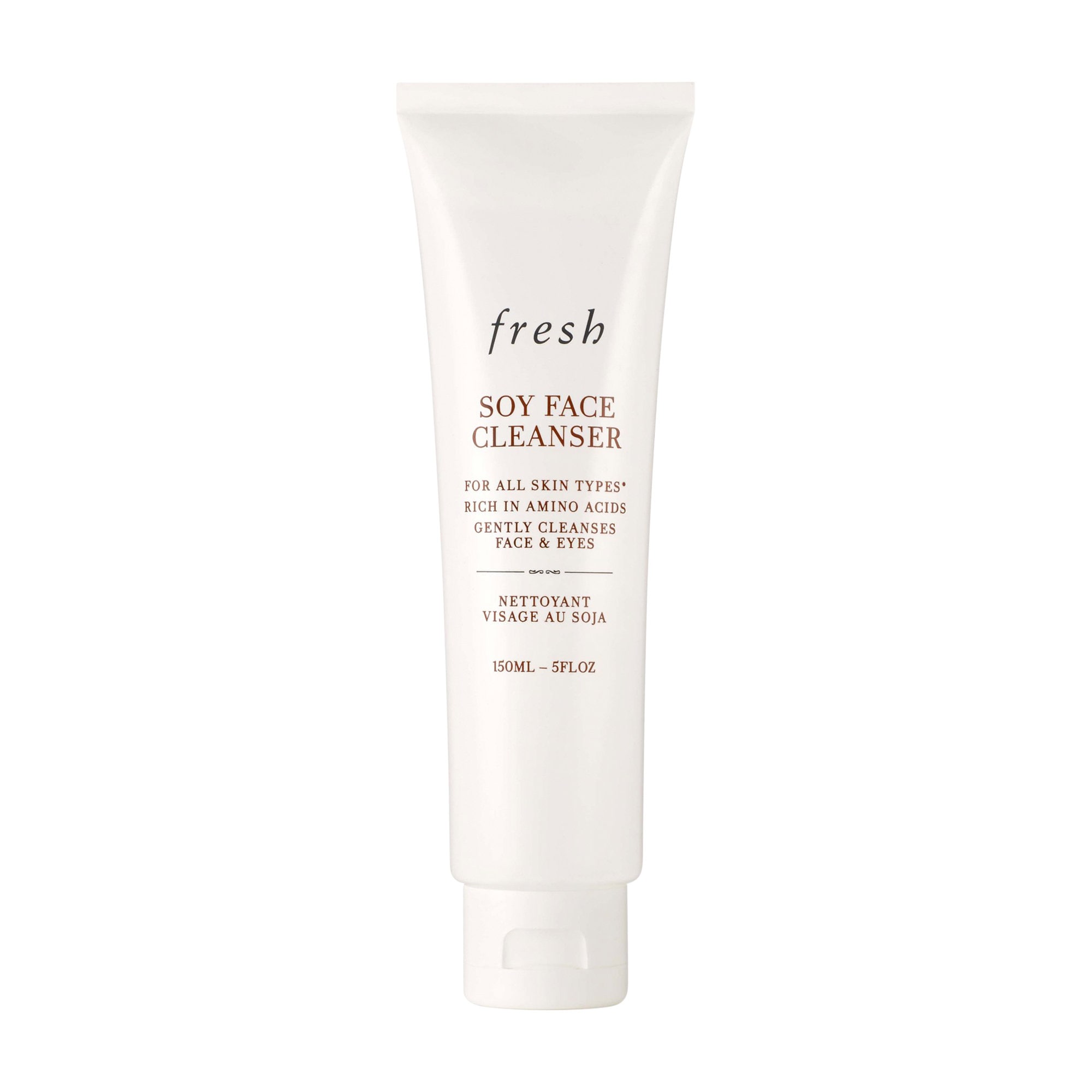
If you're a beauty lover, you likely know this cult-favorite cleanser. Designed to be used on all skin types, the gentle face wash soothes and hydrates skin, so it'll never leave your face feeling tight or dry after you rinse it off. Bonus: You'll enjoy a refreshing, comforting scent as you use it.
Key Ingredients: Soy proteins, aloe vera, cucumber extract
What I Love: Gently cleanses; Hydrates skin
What I Don't: Doesn't remove makeup very well
Review for MC: "I've used this when I've had dry, oily, and combination skin, and it's one of the few cleansers I believe is actually versatile enough to use across skin types. While it isn't powerful enough to remove my makeup at the end of the day, it's the perfect follow-up to a makeup cleansing balm or on its own if I'm having a no-makeup day. It's so gentle that I can use it morning and night, and honestly, the instantly recognizable scent makes me excited to start and end my day with it." — Catharine Malzahn, Contributing Beauty Writer
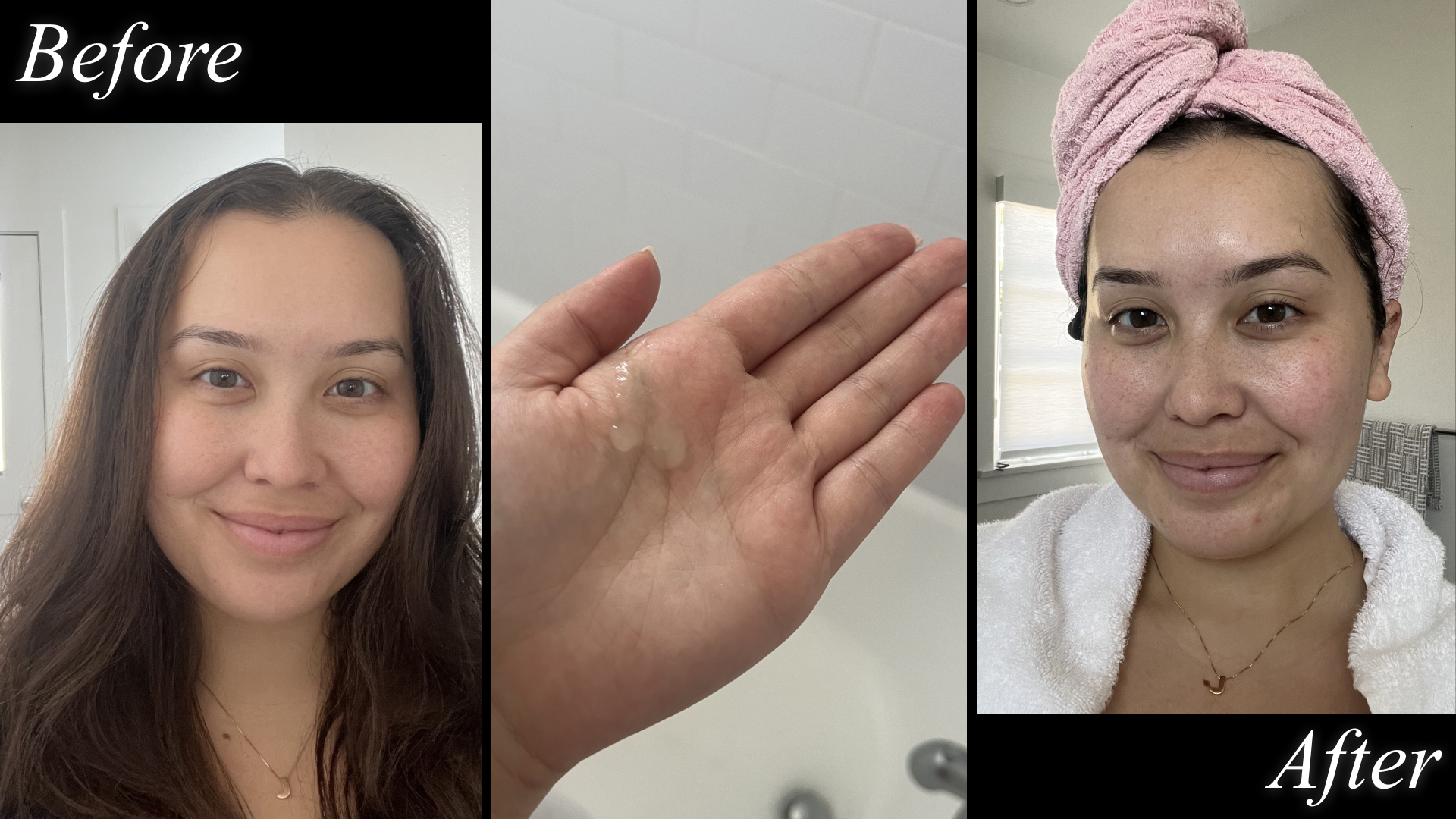
Catharine Malzahn before and after testing Fresh's Soy Face Cleanser
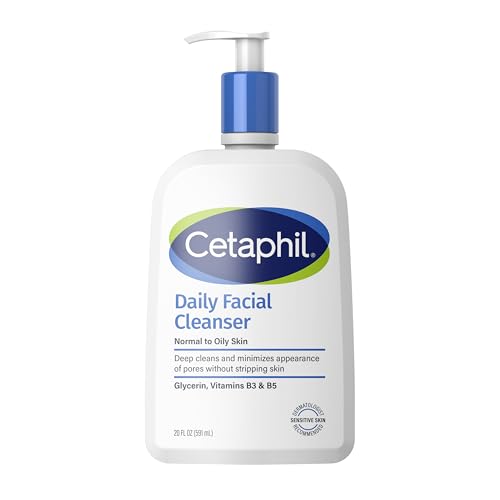
Sometimes, the best doesn't have to be the fanciest or most expensive. Case in point: Cetaphil's everyday face wash. "I recommend this cleanser for combination skin because it is a gentle, non-irritating formula that effectively removes excess oil and impurities without stripping the skin," says board-certified dermatologist Divya Shokeen, MD. Plus, its lightweight, foaming texture is suitable for all areas of the skin.
Key Ingredients: Glycerin, panthenol, niacinamide
What I Love: Expert-approved; Protects skin barrier; Great for sensitive skin
What I Don't: May leave a little bit of residue on skin
Review for MC: "A classic, dermatologist-trusted option that removes dirt and oil while maintaining your skin’s natural moisture barrier. It’s gentle enough for sensitive areas yet effective on oily zones, making it ideal for combination skin. With soothing niacinamide and panthenol, it helps reduce redness while keeping skin hydrated and comfortable." — Dr. Turegano, Board-Certified Dermatologist
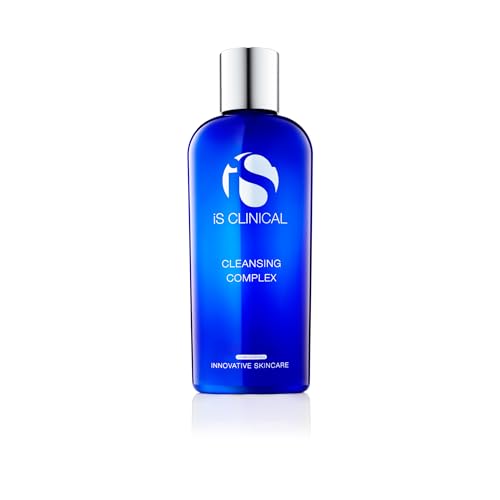
Clean the surface of your skin and deep into your pores without stripping away the natural oils with this cleanser. It's a lightweight gel cleanser that doesn't feel heavy on the skin or leave any residue behind, and it even gently exfoliates. A little goes a long way to get your skin and pores feeling detoxed.
Key Ingredients: Centella asiatica, chamomile, sugar cane, white willow bark
What I Love: Deeply cleanses; Gently exfoliates; Removes makeup
What I Don't: Pricey
Review for MC: "I'm obsessed with IS Clinical's line of products, including this cleanser. It's one of my everyday face washes, and I especially love using it at night to remove makeup and oil from the day. Despite its high-powered cleansing power and ability to minimize the look of my pores, it never makes my skin feel tight, even in my dry areas. It actually makes my skin look glowy and poreless after use. I've gotten my dad, who also has oily/combination skin, to use it also, and he's a fan." — Catharine Malzahn, Contributing Beauty Writer
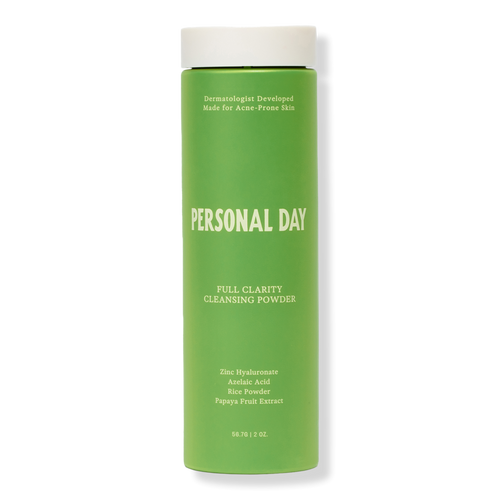
Exfoliating combination skin is so essential to slough off dry skin, remove any oil buildup, and more. However, picking the right one for combination skin can be tricky: you want something that removes gunk and dead skin cells without stripping, and Personal Day's powder-to-foam face wash (this is Lili Reinhart's skincare brand, by the way) is the one to try. The powder-based cleanser contains fine rice powder to gently exfoliate without irritating.
Key Ingredients: Rice powder, papaya extract
What I Love: Safe for acne-prone skin; Very gentle exfoliator doesn't irritate
What I Don't: Powder-based cleanser is eco-conscious, but format can take some getting used to
Review for MC: "I love this one because it transforms from a silky powder into a creamy lather, giving just enough micro-exfoliation to sweep away oil, makeup, and dull dead skin—but never strips or tightens. It feels clean, soft, and refreshingly hydrated every time. It uses ultra-fine rice powder and papaya enzymes for a gentle exfoliation that keeps pores clear without irritation." — Dr. Turegano, Board-Certified Dermatologist
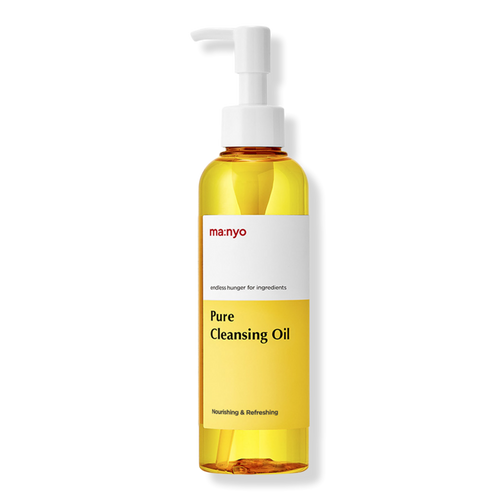
K-Beauty and Korean skincare have been seriously growing lately, and this Korean cleansing oil is a bestseller in its home market and a favorite among beauty editors here in the States. Don't let the ingredients fool you: While it's oil-based, it's hydrating but still safe for people with acne and oily combination skin. Oil cleansers can actually help break down oil on the skin, without leaving you feeling greasy. It quickly cleans away all traces of makeup and layers of skincare.
Key Ingredients: Soybean oil, hazel seed oil, grapeseed oil
What I Love: Super hydrating yet breaks down excess oil on skin; Melts away pimples and blackheads
What I Don't: More time-consuming than non-oil formulas when cleansing
Customer Review: "This face cleanser has a smooth, lightweight texture that lathers well and rinses off easily. It removes dirt, oil, and makeup without leaving my skin feeling tight or dry. Perfect for daily use, even on sensitive skin, it leaves my face feeling clean, soft, and refreshed. The formula is gentle, non-irritating, and doesn't clog pores. Since using it, my skin looks clearer and feels balanced. Great addition to any skincare routine!" — Ulta
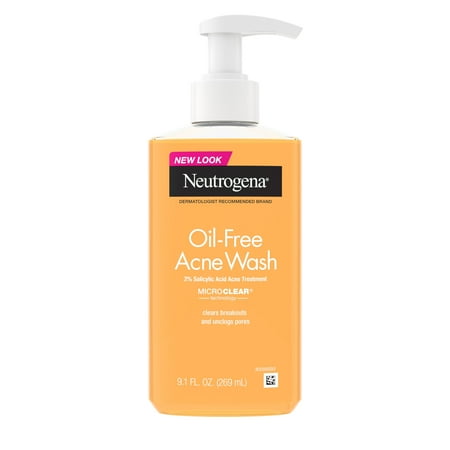
Dealing with acne and don't know what to use on your combination skin? Dr. Shokeen recommends Neutrogena's cleanser for anyone who's prone to breakouts in their most oily areas. Salicylic acid nips pimples in the bud.
Key Ingredients: Salicylic acid
What I Love: Expert-approved; Gently clears breakouts and cleanses pores
What I Don't: Some find it drying
Review for MC: "It contains salicylic acid, which helps to unclog pores and prevent acne, while the oil-free formula ensures that it does not over-dry the skin. The gentle foaming texture effectively cleanses the T-zone without stripping the drier areas of the face." — Dr. Shokeen, Board-Certified Dermatologist
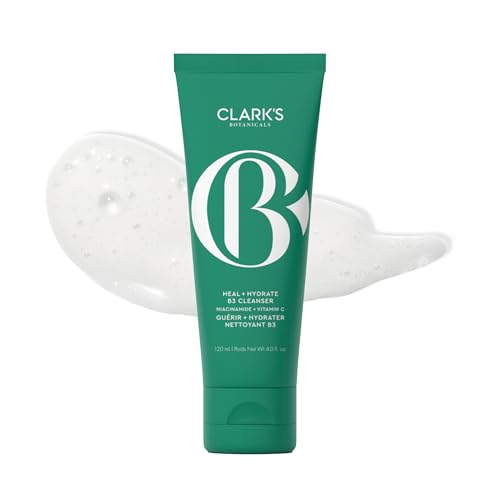
This Clark's cleanser has a lightweight, gel consistency that's perfect for combination skin. Ingredients like vitamin C, ferulic acid, and niacinamide work together to brighten dull skin and clarify, resulting in a smoother, clearer complexion. Bonus: with the addition of nourishers like red algae and glycerin, you won't have to worry about irritated skin.
Key Ingredients: Niacinamide, vitamin C, ferulic acid
What I Love: Lightweight; Multitasking formula helps brighten and nourish
What I Don't: Pricey
Customer Review: "This cleanser works very well for my skin. It contains ingredients that are effective at promoting skin health. My skin doesn't get irritated or dried out from using this product. Instead, my skin feels hydrated, soft, and clean. This cleanser is vegan friendly and cruelty free which is important to me. I would order it again but only at a lower price point." — Amazon
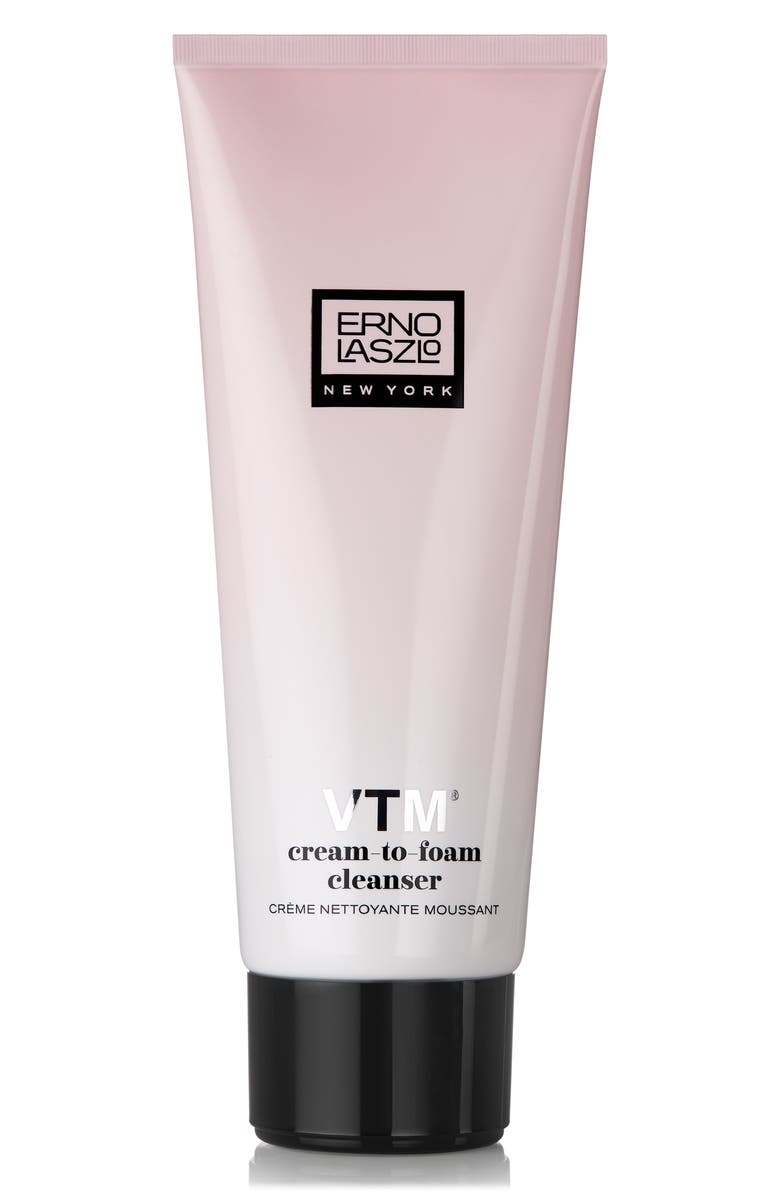
Senior Beauty Editor Samantha Holender is a big fan of this cream-to-foam cleanser because it has the dream texture: "hydrating with a rich lather." Plus, it has a refreshing scent that "instantly wakes me up."
Key Ingredients: Viola extract, amino acids
What I Love: Editor-approved; Lathers well
What I Don't: Some say it's too fragrant
Customer Review: "As a person with sensitive (and mature) skin, I am often hesitant to try new skincare products. Luckily, this cream-to-foam cleanser was a win for me! The scent is very neutral and the cleanser did not dry out my skin. I’m not sure if the price point is some thing in my budget to continue using it in the future, but I was definitely a fan." — Nordstrom
What Should I Look for in a Cleanser for Combination Skin?
- All-Star Ingredients: Cleansers come in various forms, including cleansing oils, cleansing balms, gel cleansers, and exfoliators. To treat combination skin, Dr. Shokeen recommends seeking out ingredients that are gentle, yet effective—and won't come with the risk of over-drying the skin. "Ingredients such as salicylic acid, glycolic acid, and hyaluronic acid can help to balance the skin's oil production and maintain hydration," she says. Meanwhile, "aloe vera, chamomile, and green tea extracts are also beneficial for soothing and balancing combination skin." Again, it's all about balance.
- No Harsh Chemicals: If you're constantly battling breakouts, you may feel tempted to try harsher chemicals that are tough on acne. Dr. Shokeen says those ingredients can do more harm than good. "Avoid cleansers that contain harsh sulfates, alcohol, and synthetic fragrances," she advises. "These ingredients can strip the skin of its natural oils, leading to increased dryness and potential irritation." Steer clear of heavy oils and thick, creamy textures as well. Those may be too rich for combination skin with oily areas.
- Enjoyable Consistency: The consistency of your cleanser is, for the most part, up to personal preference. As a general rule, Dr. Shokeen recommends gels and lightweight, foaming cleansers. "These formulas effectively remove excess oil and impurities without over-drying the skin," she explains. Another option is to try a cream-to-foam cleanser that gives a cushioned, foamy consistency.
How Do I Cleanse Combination Skin?
Treating combination skin starts with a consistent wash routine. Dr. Shokeen recommends using both oil- and water-based cleansers for double cleansing. "The first cleanse, typically done with a lightweight cleansing oil or micellar water, helps to remove makeup and sunscreen," she explains, while the second cleanse with a gentle foaming or gel cleanser effectively cleanses the skin without over-stripping it.
The expert also recommends exfoliating once or twice a week, regardless of your skin type, to remove impurities.
What's the Best Skincare Routine for Combination Skin?
Cleansing is just the first step of taking care of your combination skin. After choosing a balanced cleanser that tackles both your oiliness and dryness while removing buildup, move on to a serum. "A serum with niacinamide, hyaluronic acid, and/or gentle exfoliants like a low-strength salicylic acid or lactic acid can help target uneven tone, pores, and hydration at the same time," says Dr. Turegano.
Next, you'll want to moisturize—yes, even the oily areas of your skin. "Follow with a moisturizer that’s lightweight but still barrier-supportive—think gel-cream textures with ceramides or glycerin," she says. "And of course, finish with sunscreen in the morning."
Dr. Turegano recommends this streamlined routine "because it keeps the oily areas clear while nourishing the drier areas, helping your skin stay even, healthy, and comfortable," she says.
Why Trust Marie Claire
For more than 30 years, Marie Claire has been an internationally recognized destination for news, fashion, and beauty trends, investigative packages, and more. When it comes to the products Marie Claire recommends, we take your faith in us seriously. Every product that we feature comes personally recommended by a Marie Claire writer or editor, or by an expert we’ve spoken to firsthand.
How We Tested
To update this story, Contributing Beauty Writer Catharine Malzahn interviewed a board-certified dermatologist to get her feedback on what makes an ideal cleanser for combination skin and the best skincare routine for this skin type. When evaluating the 12 best cleansers for combination skin, she took into consideration aspects like lather, scent, ability to cleanse, remove oil, and hydrate skin, and more. As someone with combination skin, she's tried most of the products listed and includes many of them in her daily routine.
Meet the Experts

Dr. Divya Shokeen is a board-certified dermatologist. She has published a number of peer-reviewed articles on dermatology and dermatologic surgery, and is a member of the American Academy of Dermatology (AAD), American Society of Dermatologic Surgery (ASDS), and Women’s Dermatology Society (WDS). She is currently based in Southern California.

Dr. Mamina Turegano is a triple board-certified dermatologist, internist, and dermatopathologist who is on a mission to revolutionize traditional approaches to dermatology while empowering her patients and audience to own their own wellness from the inside out. She is also a Personal Day Advisory Board Member.
Get exclusive access to fashion and beauty trends, hot-off-the-press celebrity news, and more.

Catharine Malzahn is a freelance beauty editor and writer. She has more than half a decade of experience covering everything from skincare and makeup to spas and injectables. Previously, she held editorial positions at Good Housekeeping, Woman's Day, and Prevention; you can find her work in those publications and in Glamour, Byrdie, InStyle, PS Beauty, NewBeauty, CR Fashion Book, Makeup.com, Skincare.com, and more. When she's not writing or testing beauty products, you can find her cooking, trying a new restaurant, or reapplying sunscreen. A SoCal native, she received her BA in journalism from the University of Southern California's Annenberg School For Communication and Journalism.
- Gabrielle UlubayBeauty Writer